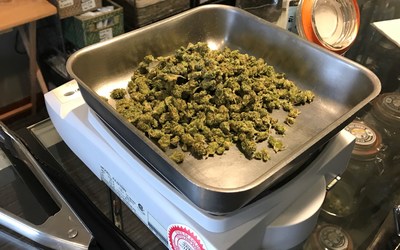ARLINGTON, Va., Dec. 28, 2017 /PRNewswire-USNewswire/ — A Highway Loss Data Institute (HLDI) analysis released in June found a higher-than-expected frequency of collision claims reported to insurers in the first three states to permit recreational use of marijuana for adults. In a study published the same day as HLDI’s release, researchers at the University of Texas at Austin found an increase in fatal crashes in two states with legalized recreational marijuana use, although the results weren’t significant. Both studies provide evidence that loosening restrictions on marijuana use affects highway safety.

HLDI found a 3 percent increase in the frequency of collision claims in Colorado, Oregon and Washington associated with the advent of retail marijuana sales. HLDI also looked at loss results for each state individually compared with loss results for adjacent states without legalized recreational marijuana use prior to November 2016. Colorado, which was first to begin retail sales of recreational marijuana, saw the biggest estimated increase in claim frequency compared with its control states.
The UT Austin study published in the American Journal of Public Health looked at changes in fatal crashes in Colorado and Washington associated with the recreational use of marijuana between 2009-15. The authors conclude that, “Three years after recreational marijuana legalization, changes in motor vehicle crash fatality rates for Washington and Colorado were not statistically different from those in similar states without recreational marijuana legalization.”
Not surprisingly, some journalists cast this study as conflicting with HLDI’s analysis, but both yield similar estimates of the effect of legalizing recreational use of marijuana.
The UT Austin study found “approximately 77 excess crash fatalities (of 2,890 total)” coincident with legalizing recreational use of marijuana. This equates to a 2.7 percent increase, the same as HLDI’s unrounded, statistically significant estimate. The UT Austin authors state that they do not view the increase in deaths as “clinically significant” and do not indicate how many deaths need to occur before they would deem them clinically significant.
Claims reported to insurers contain many lower-speed crashes, while fatal crashes make up a small, severe subset of all crashes. More data are needed to determine whether the rise in fatalities is statistically significant. In the meantime, the UT Austin analysis suggests deaths will go up.
“Together, these studies are consistent and support the conclusion that crashes have increased in states that have legalized the recreational use of marijuana,” says Adrian Lund, IIHS-HLDI president.
The methodologies, data sets, control states and time periods used in both studies differ. HLDI examined monthly collision claim frequencies per insured vehicle year to evaluate crash risk, while the UT Austin study used annual fatal crashes per billion miles traveled.
HLDI compared Colorado, Washington and Oregon among themselves and with neighboring Idaho, Nebraska, Nevada, Montana, Utah and Wyoming. Analysts chose the control states based on geographic contiguity (to control for weather or other regional differences), as well as having reasonably similar patterns of collision claim frequencies prior to marijuana legalization. The UT Austin authors primarily used Southern/Southeastern states to control for Northwestern states, comparing Colorado and Washington with Alabama, Indiana, Kentucky, Missouri, South Carolina, Tennessee, Texas and Wisconsin.
“There is no reason, for example, to expect year-to-year weather changes to be similar in Washington as in Alabama,” Lund says. “The authors indicated that they wanted to have control states that had not legalized marijuana for medical or recreational use, and that could have restricted their choice of states. However, as long as the states don’t change their laws, that is an unnecessary constraint.”
The HLDI analysis began in January 2012, and the UT Austin study began in 2009. HLDI’s data spanned claims filed between January 2012 and October 2016. HLDI used the dates that retail sales of recreational marijuana began as intervention points: Colorado in January 2014, Washington in July 2014 and Oregon in October 2015. Monthly collision claim rates after those dates compared with earlier months were used to estimate the effect of recreational marijuana.
The UT Austin study used December 2012 for Colorado (when a person age 21 and older could legally possess small amounts of marijuana) and November 2012 for Washington (when voters approved the measure) as intervention dates. Annual fatality counts in 2013-15 compared with earlier years were used to estimate the effect of recreational marijuana.
“We think that the biggest changes in behavior would occur after citizens in the study states could walk into a store and buy marijuana. Thus, it is possible that the estimated effect of recreational marijuana use on fatal crashes may have been larger had the UT Austin study used the date when retail sales began, rather than the date when use became legal,” Lund says.
The HLDI results stand on their own.
“There has been an increase in collision claims in the first three states to legalize recreational marijuana that can’t be explained by regional variation, weather, years of exposure, the economy or changes in vehicle density,” Lund says.
SOURCE Highway Loss Data Institute




